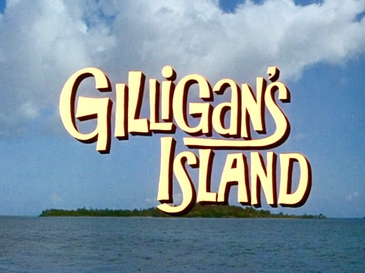 The Coast Guard Marine Safety blog has a wonderful post, republished from Proceedings of the Marine Safety & Security Council, that applies the GAR model to the voyage of the S.S. Minnow. In the post/article LCDR Thomas Olenchoc approaches risk management in a playful yet effective manner - it is well worth your time.
The Coast Guard Marine Safety blog has a wonderful post, republished from Proceedings of the Marine Safety & Security Council, that applies the GAR model to the voyage of the S.S. Minnow. In the post/article LCDR Thomas Olenchoc approaches risk management in a playful yet effective manner - it is well worth your time.Excerpt:
We use the GAR model every time we get underway and report a GAR score as part of setting up our radio guard with Sector Portland. Every boater would be wise to run through a similar list before and while boating.Analyzing the “Gilligan Factor”— The Green, Amber, Red Model
So how did the crew of the S.S. Minnow get stuck on that remote island? Would applying the ORM model of green, amber, red (GAR) have suggested they reconsider their decision to sail that day?
The GAR model has six inputs that are weighted to evaluate risk. These factors, scored on a scale of 1 to 10, with “10” being a high risk, are:
- Supervision—In this case, the skipper was probably not a substantial source of supervision risk and could be scored low. Let’s call this a “1.”
- Planning—Since it was a trip they had made several times before, we’ll score it a “2.”
- Crew selection—This is where we factor in Gilligan. I would have to say the “little buddy” is a walking risk and would score him around a “7.”
- Crew fitness—Remember this is not just rating weight and strength, but also takes into consideration things like fatigue, alertness, and external stresses. I would rate crew fitness a “2.”
- Environment—Sailing or flying into a typhoon sounds like a very high-risk maneuver to me. I would rate environment as a “10.” Environment also factors in the platform or location. For example, the S.S. Minnow would not weather the typhoon as well as would a large, steel-hulled vessel.
- Event complexity—Event complexity would be low. It was only a three-hour tour, so I’d rate it a “3."
A score of 0 to 23 indicates “green” (low risk), 23 to 44 warns “amber” (caution), and between 44 and 60 is “red” (high risk).
By adding up the S.S. Minnow’s factors, we see it rates a score of 25, or “amber,” which tells us that something should be addressed to help mitigate the risk.
A look at the categories shows that environment is the largest source of risk. By postponing the tour or taking a different route, we could reduce that risk.
Definitions:
Operational Risk Management or ORM - the family of procedures, practices and disciplines we use to reduce and manage risk to our people, our equipment and those we seek to save.
Green Amber Red Model or GAR Model - one of the ORM models we use as operators. The GAR model is executed collaboratively by the crew prior to getting underway. We also mentally (if not formally) update the model throughout the day as the risk factors change. We try to get everyone thinking GAR at all times. There have been situations where I've said or been told, "I think our GAR number just went up" and we then reassessed the situation.
Sector Portland - One of two Sectors in District 13. Since Sector Portland is in our area the Sector Command Center provides our radio guard most of the time.
Radio Guard - We encourage recreational boaters to file a float plan [http://www.FloatPlanCentral.org/] so someone ashore knows where they plan to go. This allows the person ashore to notify the Coast Guard if the vessel is overdue and gives us critical information to execute a successful search. All Coast Guard vessels and aircraft maintain a radio "guard" with another Coast Guard or partner resource for similar reasons. In most Auxiliary surface operations situations this is a report on situation and position every half hour.
Resources:
Proceedings of the Marine Safety & Security Council
COMDTINST 3500.3 Operational Risk Management

No comments:
Post a Comment